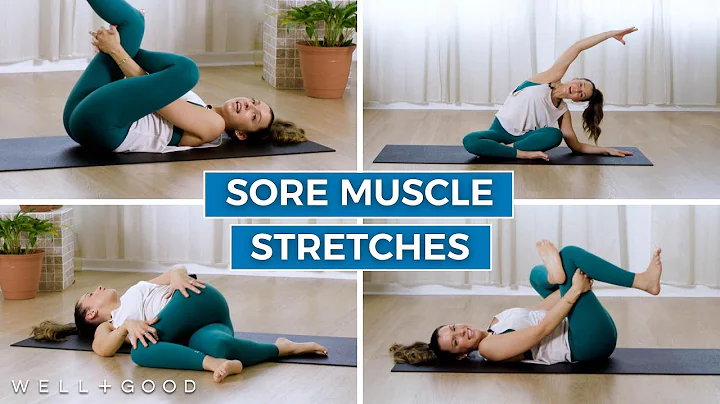Our goal is to relax our muscles after exercise, but what effect does stretching have on your body, and how can you get the most benefit?

We combed through the research and spoke with Luke Hughes, Level 4 PT and founder of OriGym, to learn more about the benefits of stretching.
Why should I stretch?
Just like aerobics or strength training, stretching is a broad umbrella that encompasses a range of exercises that are helpful in different ways. "It helps relax and lengthen body muscles, thereby improving their range of motion, while also reducing the likelihood of acute muscle strain," says Hughes. If you've been injured, targeted stretching can also be part of your recovery. American Academy of Orthopedic Surgeons study finds people with acute plantar fasciitis (a painful condition on the bottom of the foot, especially in runners) do better with stretching than those who receive shock wave therapy, while Archives of Internal Medicine finds stretching therapy More effective than yoga in reducing chronic low back pain.
Stretching before and after exercise
The key to stretching before exercise is to keep it dynamic: active movements that allow your muscles to work through their range of motion. "These repetitive movements serve as your body's initial warning system, preparing it for what's about to happen," says Hughes. "The muscle fibers relax and become longer, thereby increasing the amount of movement you can achieve with those muscles. .”
Different dynamic stretches are suitable for different exercises, but may include leg swings for runners, walking lunges for football players, arm swings for swimmers, and spinal rotations for anyone who needs upper body flexibility. While most fitness experts encourage dynamic stretching before a workout, a review in the Canadian Science Press – of hundreds of studies in 2015 found that incorporating some static stretching as part of a full-body warm-up makes It doesn't hurt to get your blood pumping, as this combination may help reduce muscle strain.
However, static stretching will provide the most benefits once you've completed your workout. "Static stretching requires you to move the muscle as much as possible without feeling pain, holding the stretch for a total of 20-45 seconds and repeating multiple times," says Hughes. At least 10 minutes is a good goal to help you calm down.
Other types of stretching
In addition to dynamic and static, there are other types of stretching. Hughes explains some varieties:
- Ballistic stretching: is similar to static stretching, but it requires you to move quickly rather than gradually, beyond your average range of motion. For example, the action of touching your toes now requires you to spring up and jerk onto your foot.
- Passive stretching: An external force is required to create resistance: this could be another person, a prop such as a resistance band , or even just gravity. Interestingly, according to the Physiological Society, passive stretching 5 times per week for 12 weeks may help reduce the risk of heart disease and diabetes because it helps improve blood flow by improving artery health.
- PNF Stretching: Proprioceptive Neuromuscular Facilitated Stretching requires you to actively stretch your muscles through a combination of alternating contraction and relaxation techniques. However, this can only be done under expert guidance.
- Isometric Stretching: An advanced type of static stretching that uses isometric contractions to increase resistance in a muscle group. For example, placing the straight leg on a chair and pressing leg downward will produce an isometric contraction.
Which muscles need stretching the most?
To some extent, your stretching routine should be guided by the exercise you enjoy. So if you're doing upper body weight training, you need to pay attention to your arms, shoulders, and core muscles. Runners may want to spend more time on the legs and hips. But there are some muscles that can be associated with regular TLC.
"I recommend that you pay special attention to the muscles responsible for your general movements," says Hughes. "This includes the calves, hamstrings, the hip flexors in the pelvis, and the quadriceps on the front of the thigh.By stretching these areas regularly, you can help your muscles stay long and flexible, which in turn can help you maintain balance. ” As you age, your muscles tend to shorten and tighten, so your future self will thank you for the work you put in now.
What happens if I don’t stretch enough?
It’s not the most enjoyable workout 's part, but regular stretching can prevent serious pain in the long run. "Inflexibility will cause your muscles to fatigue at a faster rate and your joints will be more susceptible to injury." This causes abnormal stress on the structures, which in turn leads to less blood and nutrients in the joints," says Hughes.
Things get trickier if you're a gym bunny. "The average athlete also has an excess of anti-inflammatory hormones in their bodies. Lactic acid, a stimulant that can cause muscle soreness. As you stretch, your body begins to break down and remove this harmful substance while distributing oxygen to your body. muscle. "In other words, missing a session isn't a big deal, but not stretching regularly can lead to a buildup of problems, including muscle soreness and inflexibility, especially if you exercise regularly.





















